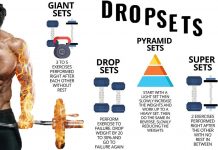🔥 HIP-HINGE DEVELOPMENT

✅ How is your hip hinge, are you able to dissociate your hip movement form spine? Watch yourself in a mirror and try to bend forward only at the hips, observe if you’re able to do that while keeping a neutral spine. If you’re not able to, it will be beneficial for you to develop a new motor patter of hinging, not only for the gym but in everyday life. Here is how to do it.
⠀
The first thing that may be limiting your hinge is your hamstrings, make sure they’re not restricting your movement. When you bent forward at the hip if you feel your pelvis lock up and hamstrings tighten it may be beneficial to work on their extensibility. Since we’re practicing a hinge with locked knees the hamstring only lengthens at the hip and can potentially stop your hinge. This will often cause you to compensate by rounding forward, even if very slightly.

If your hamstrings aren’t limiting your then its most likely a motor pattern, if you’re used to rounding at the back when bending it will be hard for your back to disassociate this movement now. Try this first, grab your pelvis on both sides, and think about rotating them forward from where your hands are. Now, initiate your hinge from the pelvis and allow your body to follow it as you hinge forward. Now after that, try and tighten your core as you go down to make your torso rigid.
⠀
If you’re still having trouble, find a long rod, pipe, or broom handle, place it behind your back one end on the back of your head, the other on your pelvis. Now initiate the hinge from your pelvis again while keeping contact with the stick at both points. Repeat the motion for a few sets of 10 and try without the pole. After that have someone watch you perform this and keep an eye on your back and let you if you’re rounding

Mastering the hinge will allow you to perform exercises as intended and can reduce unwanted pressure on your low back.

















































